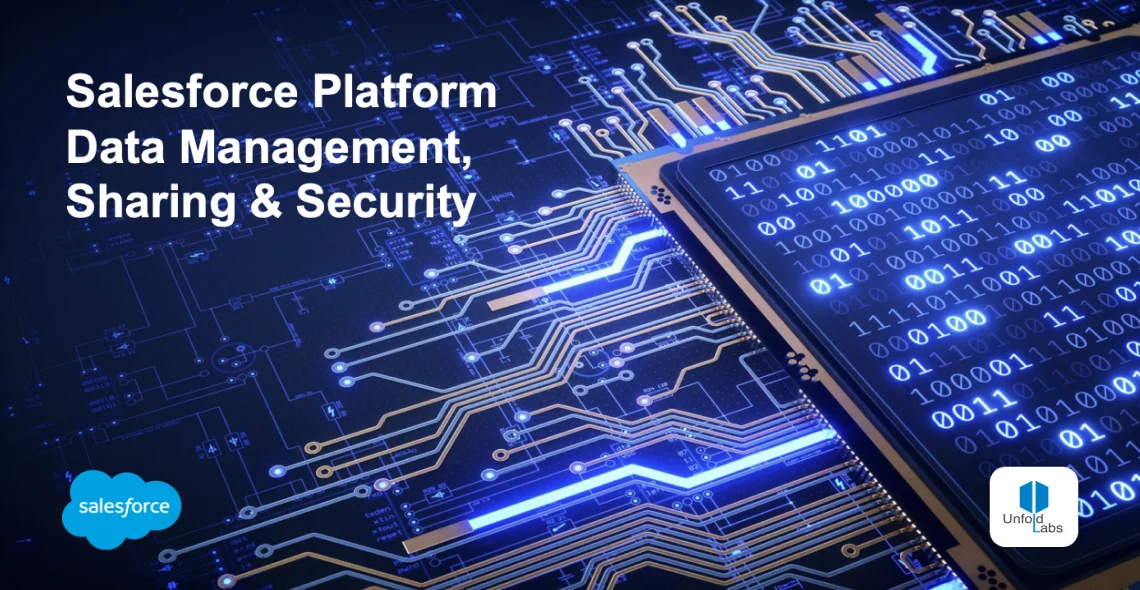Salesforce Platform Best Practices: Data Management, Sharing & Security

The worldwide push towards digitalization across various industries has led to a significant demand for secure, cost-effective, cloud-based solutions that enable businesses to adapt to the changing landscape and operate efficiently. As a result, the Customer Relationship Management (CRM) market has witnessed substantial growth, from $52.64 billion in 2020 to $58.04 billion in 2021, and is projected to reach $128.97 billion by 2028.[1]
Pioneering the way in CRM is Salesforce, holding a dominant 19.8% market share. With strategic acquisitions such as Slack, MuleSoft, and Tableau, Salesforce offers a comprehensive ecosystem that covers the entire customer journey, integrating data analytics and system connections within a single platform.
In 2021, Salesforce served over 150,000 customers and generated $21.25 billion in revenue. The company's revenue has consistently grown at a Compound Annual Growth Rate (CAGR) of 51% over the past two decades, with a 29% CAGR over the last decade. [2]
Data management, security, and privacy have become paramount as businesses handle increasing volumes of data. This responsibility entails:
- Data Management: Efficiently organizing data for effective utilization.
- Data Security: Mitigating security breaches in the era of heightened connectivity.
- Data Privacy: Safeguarding customer data from malicious threats.
Salesforce addresses these concerns through its multi-tenant architecture, where shared resources offer privacy and security. The platform offers robust data security models and tools for controlled data access. Key solutions include:
- Multi-Factor Authentication (MFA): A secure login method requiring multiple verification factors.
- Single Sign-On (SSO): Allowing users to access multiple applications with a single set of credentials.
- Device & Session-Based Security: Verification for access from different devices or IPs.
- Data Access & Permission-Based Security: Object, field, and record-level security settings to control data access.
- Shield Platform Encryption: Protecting data at the platform level while complying with regulations.
- Salesforce Monitoring & Auditing: Tracking login history, field history changes, and session security.
Salesforce offers several mechanisms for sharing data, including sharing rules. These rules facilitate extending access to records for users not covered by organization-wide settings. Different types of sharing rules include owner-based, criteria-based, guest user, manual sharing, and apex-managed sharing. While there are limitations to the number of rules, creative solutions can extend these limits. However, it's crucial to exercise caution and follow best practices when using Salesforce's data sharing features:
- Limit Number of Sharing Rules: Owner-based sharing rules (100 per object) and criteria-based sharing rules (50 per object) should be managed thoughtfully.
- Avoid Dangerous Permissions: Refrain from using "view all" or "modify all" permissions within profiles to prevent inadvertent data access.
- Leverage Object Hierarchy: Sharing rules can automatically grant access to related records.
Innovative solutions can also be developed to overcome sharing rule limitations, such as using custom apex-managed sharing to extend the capabilities of standard settings.
Conclusion
In conclusion, data is the foundation of modern business operations, and its management and security are paramount. Salesforce provides powerful tools to manage data access and security, and by adhering to best practices, organizations can harness its capabilities effectively. Custom solutions can also be developed to address specific limitations and requirements, all while ensuring data remains secure and accessible.